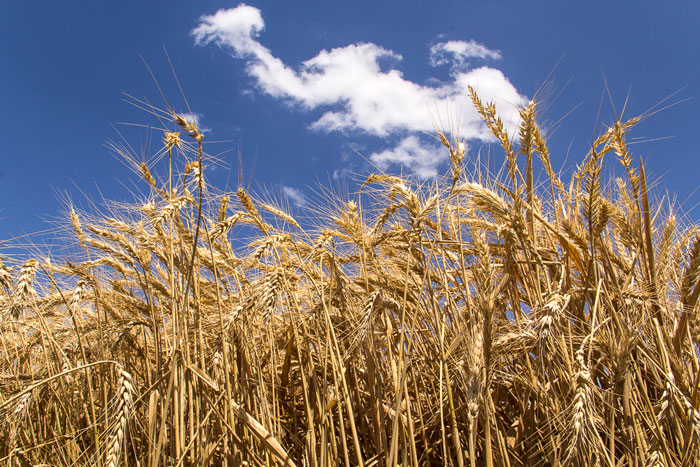February 29, 2016

Elevators are offering from minus 60 cents to minus 46 cents basis the KC July 2016 wheat contract price for 2016 harvest-delivered wheat. With the KC July price at $4.65 (using a minus 50 cents basis), the forward contract price for harvest delivered wheat is $4.15.
The out-of-pocket cost for producing wheat (assuming a 30 bushel average yield) may be between $4.50 and $5.50 per bushel. Using a forward contract price of $4.15 ($4.65-0.50) and a $5.00 per bushel cost of production, producers are looking at losing 85 cents per bushel, or $25.50 per acre.
Using $4.15 for the harvest price, the break-even yield is 36 bushels per acre ($150/$4.15). With 30 bushel per acre production, the break-even price is $5.00 ($150/30 bu.).
Three major factors that could cause wheat prices to increase by 85 cents or more are a lower value of the dollar relative to other major currencies (the dollar index), a significantly lower than expected U.S. winter wheat crop, or significantly lower than expected foreign (world) wheat production.
NO DECLINE FORSEEN
Currently, the index of the U.S. dollar is 97.4. A 20 percent decline would be 78. The index was last at the 78 level in June 2014. The dollar index has been trading between 95 and 100.7 since March 2015. It took nine months for the index to move from 78 to 95, and it probably would take nine months to decline to 78. No market signals are indicating that the index is going to decline anytime soon.
For the latest on southwest agriculture, please check out Southwest Farm Press Daily and receive the latest news right to your inbox.
A significantly lower than expected U.S. winter wheat crop could result in the wheat price going above $5.00. However, any price benefit would be offset by lower yields. As yields go down, the breakeven price goes up. For lower U.S. production to benefit Oklahoma and Texas wheat producers, production would have to be average or better in Oklahoma and Texas and below average everywhere else. The odds are against that happening.
What needs to happen is for foreign wheat production to be less than expected, an event that has two problems. One is the amount of the loss required, and the other is the timing of the loss.
RECORD WORLD STOCKS
World wheat ending stocks for the 2015/16 wheat marketing year are projected to be a record 8.8 billion bushels. The eight-year average is 7.3 billion bushels, and 2014/15 ending stocks were 7.9 billion bushels.
Wheat use was 25.9 billion bushels in 2014/15, and 26.1 billion bushels in 2015/16. Using 26 billion bushels as the estimate for 2016/17 wheat use, world wheat production would have to be 26 billion bushels for world stocks just to stay at current levels (little or no change in price).
For world stocks to decline to 2014/15 marketing year levels (wheat prices in the $5.50 range), 2016/17 production must be 25.1 billion bushels or less. World use would need to be 26 billion bushels.
For wheat prices to reach the $6.50 level or higher, world production would need to be 24.5 billion bushels or less. This result would require 8.8 billion bushels beginning stocks plus 24.5 billion bushels production minus 26 billion use (8.8 + 24.5 – 26).
The most likely scenario for Oklahoma and Texas wheat prices to be above the cost of production is for foreign production to be substantially below expectations, which happened in the 2010/11 and the 2012/13 wheat marketing years. Both times, price rallies started in the August/September time period. And both times, the initial price increase was about $3.00.
The current prognosis may not be good for Oklahoma and Texas wheat prices. If the prognosis changes for the better, it may be August or September before it happens.
About the Author(s)
You May Also Like






